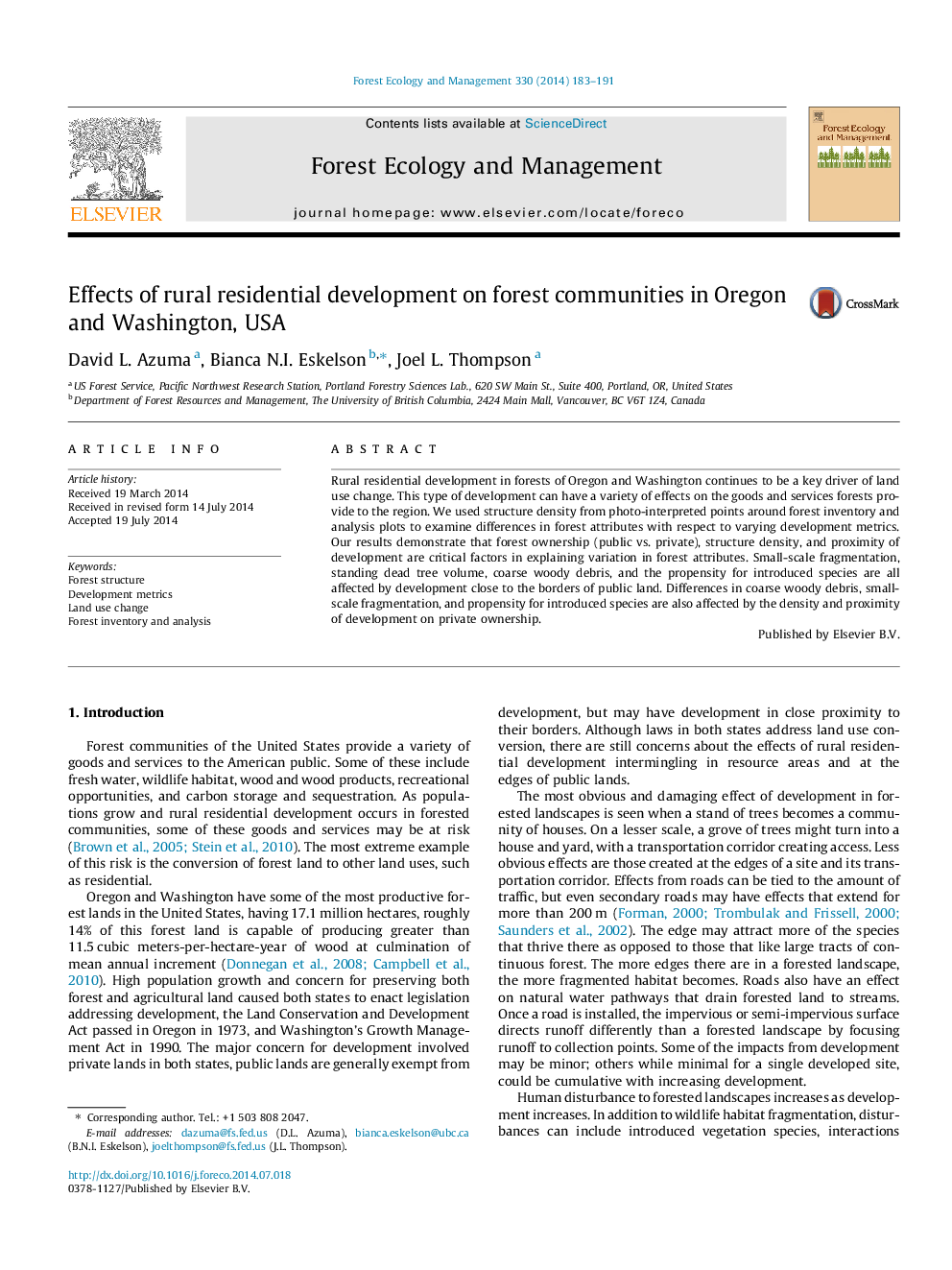| Article ID | Journal | Published Year | Pages | File Type |
|---|---|---|---|---|
| 6543346 | Forest Ecology and Management | 2014 | 9 Pages |
Abstract
Rural residential development in forests of Oregon and Washington continues to be a key driver of land use change. This type of development can have a variety of effects on the goods and services forests provide to the region. We used structure density from photo-interpreted points around forest inventory and analysis plots to examine differences in forest attributes with respect to varying development metrics. Our results demonstrate that forest ownership (public vs. private), structure density, and proximity of development are critical factors in explaining variation in forest attributes. Small-scale fragmentation, standing dead tree volume, coarse woody debris, and the propensity for introduced species are all affected by development close to the borders of public land. Differences in coarse woody debris, small-scale fragmentation, and propensity for introduced species are also affected by the density and proximity of development on private ownership.
Related Topics
Life Sciences
Agricultural and Biological Sciences
Ecology, Evolution, Behavior and Systematics
Authors
David L. Azuma, Bianca N.I. Eskelson, Joel L. Thompson,
